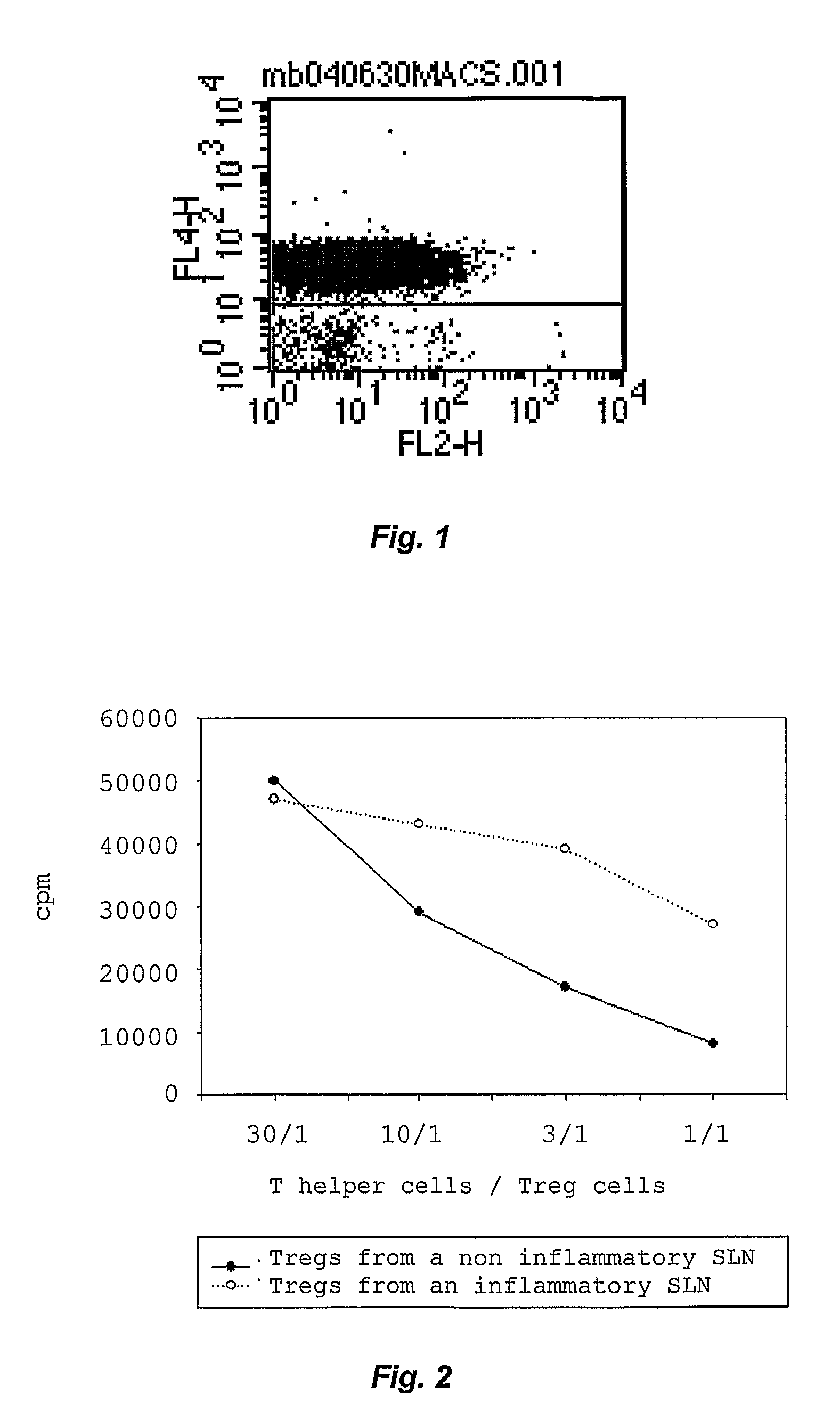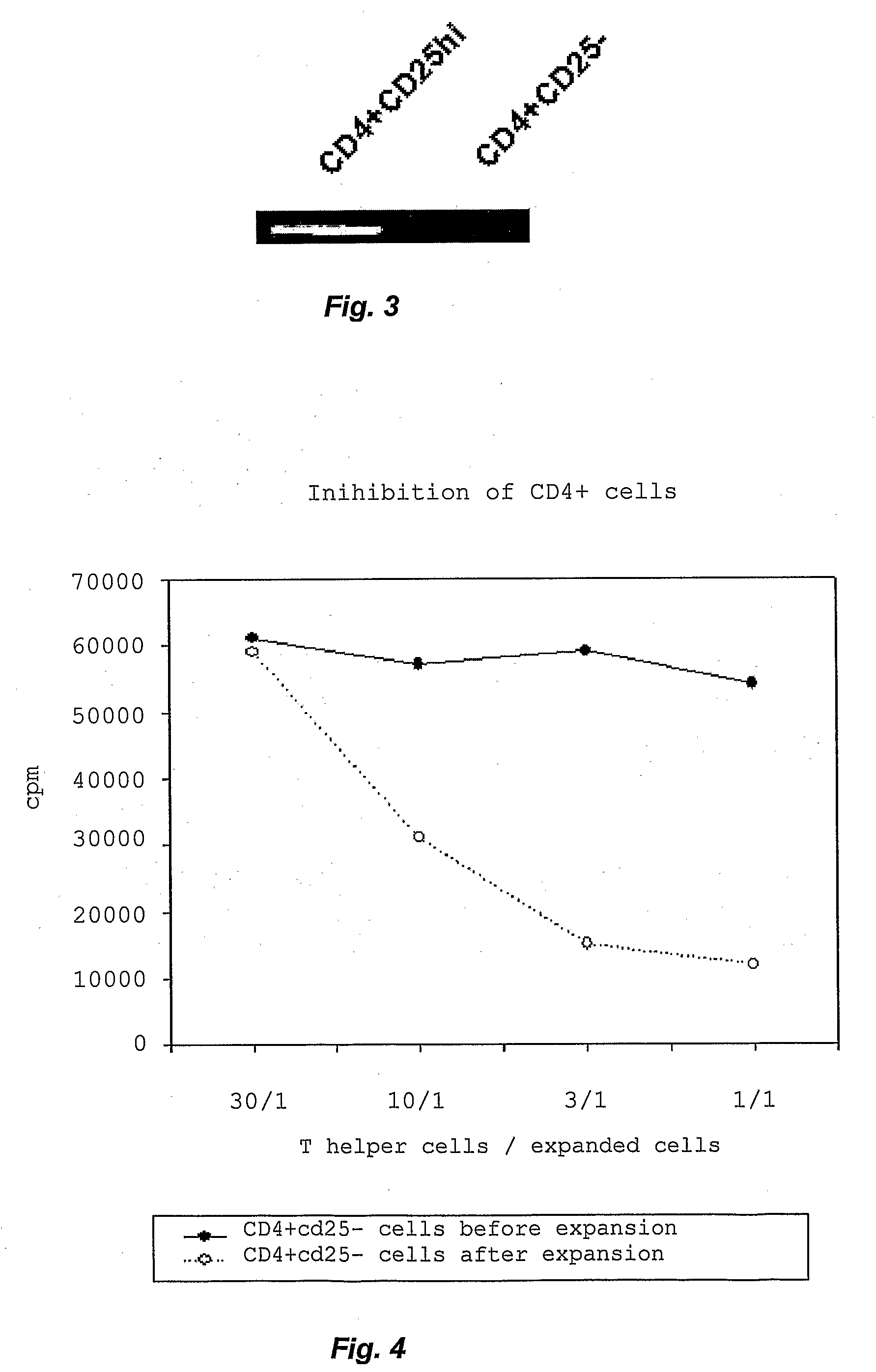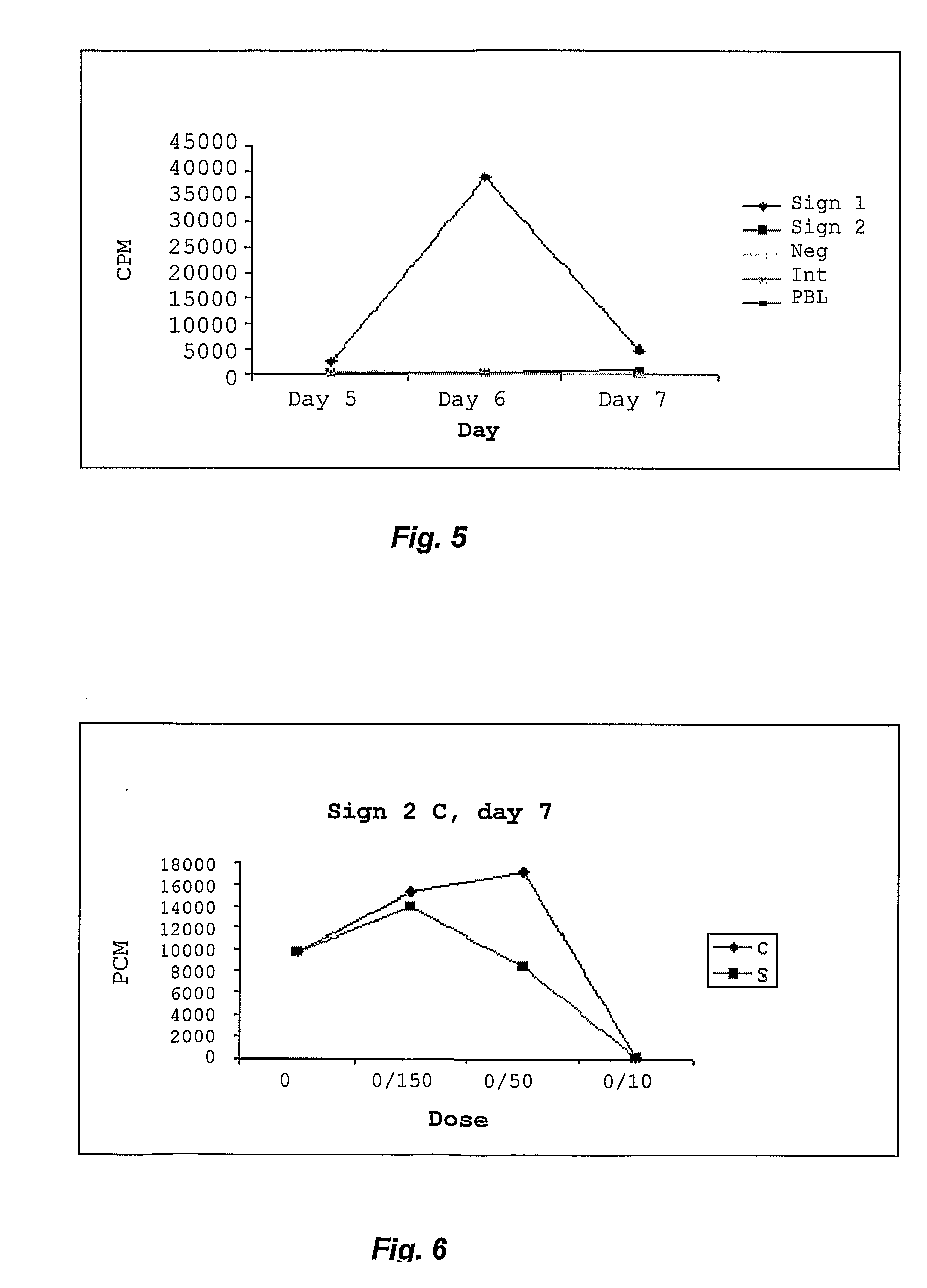Treatment of inflammatory bowel disease
a technology for inflammatory bowel disease and bowel disease, which is applied in the direction of immunosuppressive drugs, peptide/protein ingredients, drug compositions, etc., can solve the problems of increasing the risk of cancer in the large bowel, surgical bowel resection and permanent stoma, and long treatment with cortisone and/or immunosuppressive drugs with severe side effects, etc., to achieve the effect of keeping cancer at bay
- Summary
- Abstract
- Description
- Claims
- Application Information
AI Technical Summary
Benefits of technology
Problems solved by technology
Method used
Image
Examples
example 1
Identification of Sentinel Nodes Draining Inflammatory Bowel Segments
[0033]The sentinel node technique has been used for a decade to establish the staging of malignant tumours, mainly malignant melanoma and breast cancer. The sentinel node is identified during surgery by depicting the lymph drainage from the cancer using a lymphatic staining agent such as patent blue (CAS 129-17-9 and patent blue V (CAS 3536-49-0; often supplied as a calcium-chelated dimer), which is injected in the lesional areas of the intestine. The sentinel nodes so identified are marked by suture(s) or by other means. Then the intestinal lesions together with unaffected marginal zones and mesentery including vessels and regional lymph nodes are resected in a conventional manner. The resected tissue is carefully investigated and the sentinel nodes identified and removed. This method is applied to sentinel nodes draining both inflamed and unaffected intestine in patients with ulcerative colitis or Crohn's disease...
example 2
Isolation of T Cell Populations
[0034]Lymphocytes and monocytes are purified from blood samples or buffy coats using Ficoll-Hypaque Plus (Amersham Biosciences, Uppsala, Sweden). The buffy coat or blood sample in question was diluted with PBS and carefully layered onto Ficoll-sodium diatrizoate solution, after which the two-phase system was centrifuged at 400·g for 30 min. The lymphocytes and monocytes collected at the interphase between the Ficoll solution and plasma, whereas erythrocytes and granulocytes gathered at the bottom of the tubes. The lymphocyte layer was removed using a Pasteur pipette, and the cells washed with HBSS to remove excess Ficoll-Hypaque Plus, plasma and platelets. When the cells were not used immediately, they were stored at 37° C. in RPMI medium containing 10% HuS, 1% PeSt and 1% glutamine. Conventional CD4+Th cells and CD4+CD25+ cells were purified using an autoMACS Separator (Miltenyi Biotec, Bergisch Gladbach, Germany). The cells were counted, centrifuged ...
example 3
Characterization of Cells by Flow Cytometry
[0035]Flow cytometry (FACS) was used to investigate the expression of different surface markers on the isolated cell populations. Cells were distributed into 4 mL FACS tubes, washed with 2 mL FACS buffer (2% FCS, 0.05% sodium azide in PBS), centrifuged at 300·g for 10 min, the supernatant poured off and the pellet re-suspended in 100 μL of FACS buffer. 7 μL of each antibody to be used was added and incubated for at least 30 min at 4° C. whereupon the cells were washed once more with FACS buffer, centrifuged as before and re-suspended in 1 mL of FACS Lysing Solution for cell fixation and erythrocyte lysis, mixed and incubated for 10 min at 4° C. before washing and centrifuging them once again as described above. The supernatant was poured off and cells re-suspended in 500 μL of FACS buffer per tube, after which analysis was carried out using a Becton Dickinson FACSCalibur instrument (Franklin Lakes, N.J., USA).
PUM
| Property | Measurement | Unit |
|---|---|---|
| time period | aaaaa | aaaaa |
| time period | aaaaa | aaaaa |
| volumes | aaaaa | aaaaa |
Abstract
Description
Claims
Application Information
 Login to View More
Login to View More - Generate Ideas
- Intellectual Property
- Life Sciences
- Materials
- Tech Scout
- Unparalleled Data Quality
- Higher Quality Content
- 60% Fewer Hallucinations
Browse by: Latest US Patents, China's latest patents, Technical Efficacy Thesaurus, Application Domain, Technology Topic, Popular Technical Reports.
© 2025 PatSnap. All rights reserved.Legal|Privacy policy|Modern Slavery Act Transparency Statement|Sitemap|About US| Contact US: help@patsnap.com



